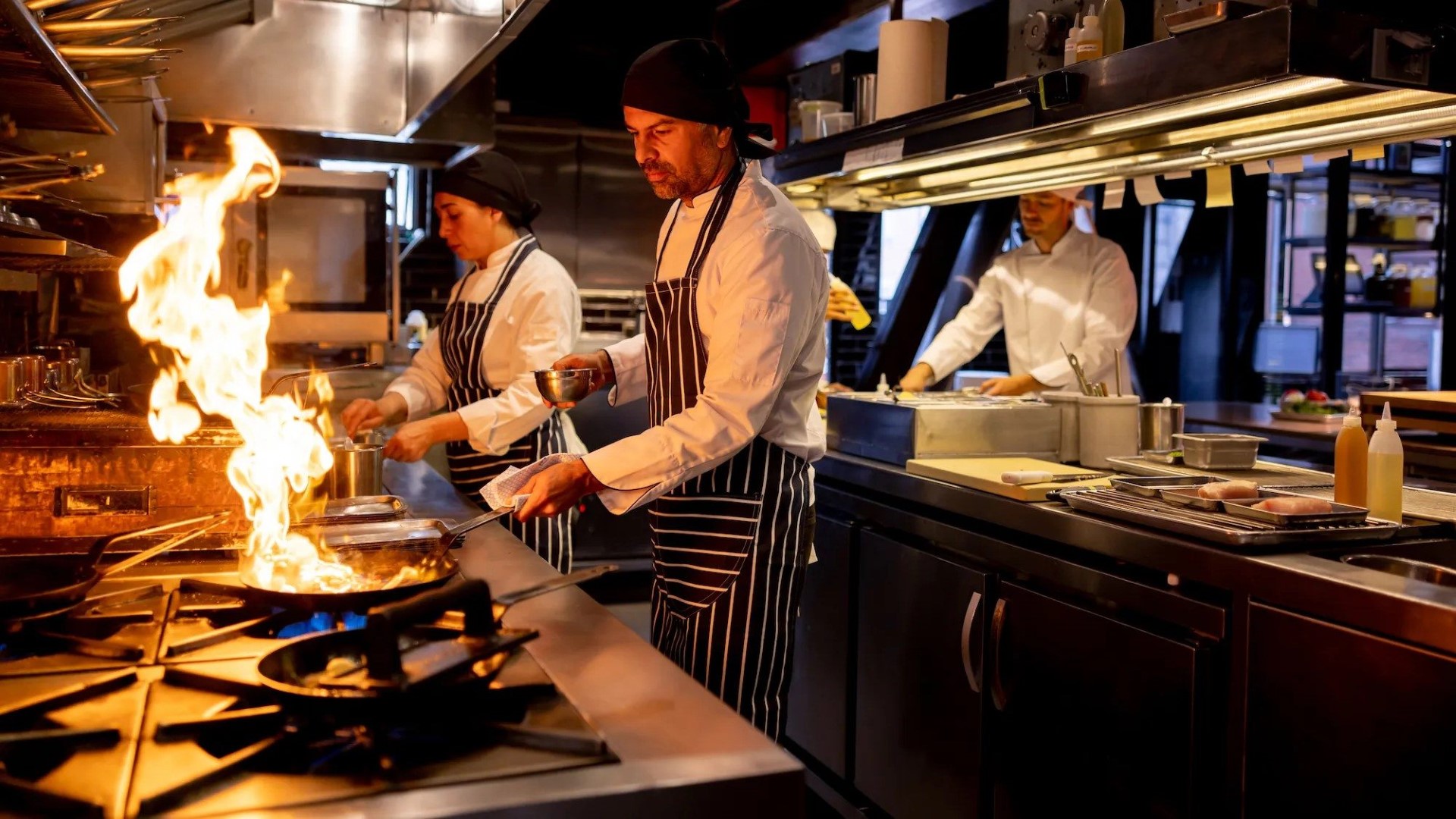Navigating the World of Commercial Cooking Equipment: A Detailed Guide
In this guide, we’ll break down what commercial cooking equipment is, why it differs from consumer-grade equipment, and provide an overview of the key equipment in the commercial kitchen.

The complex world of commercial cooking equipment can feel overwhelming, especially for those who are new to the culinary industry. Whether you’re designing your first commercial kitchen or upgrading an existing one, understanding the nuances between different types of devices can make all the difference.
What is Commercial Cooking Equipment?
Commercial cooking equipment refers to appliances and tools used in commercial kitchens, such as restaurants, cafeterias, bakeries, and culinary schools. Unlike consumer-grade home kitchen equipment, commercial equipment is designed to withstand continuous use and produce a larger volume of food quickly and efficiently.
How Commercial Cooking Equipment Differs from Consumer Equipment
Commercial kitchen equipment is essentially higher-grade, professional versions of what you might find in a home kitchen. Differences between the two include:
- Volume and Size: Commercial kitchens often require larger equipment to handle bigger volumes of cooking.
- Durability: Given the frequency and intensity of use, commercial equipment is built to last with heavy-duty materials.
- Regulation Compliance: Commercial equipment must adhere to stricter safety and health codes.
- Versatility: Many commercial kitchen tools are designed for multi-purpose cooking.
A Deeper Look: Essential Commercial Cooking Equipment
Let’s break down the specifics of important commercial kitchen equipment:
Fryers
Used for deep-frying foods, commercial fryers come in many sizes and formats. They typically have high output and quick recovery times to keep up with busy service periods.
Combi Ovens
Combi ovens combine three cooking methods: steaming, convection, and a combination of both. They offer great versatility, allowing chefs to cook a wide range of dishes in the same appliance.
High-Speed Oven
Delivering speedy cooking times by combining convection, microwave, and impinged air heating methods, high-speed ovens are vital in fast-paced kitchens where speed is critical.
Induction Cookers
Induction cookers utilize magnetic fields to heat pots directly, making them highly efficient, precise, and safe. They are great for kitchens needing quick temperature reactions.
Gas Cookers
These traditional cooking appliances offer precise heat control and are vital to any kitchen, providing the capability to simmer, boil, sauté, or fry.
Chargrills
Chargrills give a great smoky flavour by cooking food directly over heat, perfect for steaks, burger patties, or vegetable skewers.
Griddles
Griddles provide a flat, heated surface ideal for cooking a variety of foods from pancakes and eggs to burgers and stir-fries.
Hot Food Holding Carts
Also known as a Banquet Trolley, are essential for catering and buffet situations, these carts keep food hot and safe for extended periods, while also providing mobility.
Salamander Grills
Named for their high-heat qualities, salamander grills are extremely versatile, used for grilling, toasting, caramelizing, and browning.
What to Consider When Deciding What Commercial Cooking Equipment to Buy
Selecting commercial cooking equipment for a restaurant or industrial kitchen involves a myriad of considerations, dealing with aspects extending beyond simply which brands and models to choose. Here are some fundamental factors that should guide the purchasing process:
1. Menu and Volume
The first and foremost consideration should be the menu your kitchen will serve. This will dictate what types of cooking equipment you need. Similarly, the volume of food you’ll be producing plays an essential role — larger crowds require durable, high-capacity models.
2. Kitchen Space
Consider the floor area of your kitchen. Each piece of equipment should ideally fit into the kitchen layout without causing congestion. It’s paramount to maintain adequate free space for work flows, safety, and health regulations.
3. Energy Efficiency
Opting for energy-efficient equipment can significantly cut operational costs over the long run. Check for ENERGY STAR-rated products that promote environment sustainability without compromising on performance.
4. Budget
Know your financial capacity and plan your purchase accordingly. Factor in both direct cost of the equipment and indirect costs like installation, maintenance, and increased utility bills.
5. Ease of Use and Cleaning
A kitchen runs smoothly when its staff can operate the equipment comfortably and efficiently, so consider user-friendliness. Additionally, equipment that’s easy to disassemble and clean saves time and ensures Hygiene Standards compliance.
6. Durability and Warranty
Commercial kitchen equipment is a considerable investment, and durability should be a top concern. Check for warranties and post-purchase support services, which can save you from potential expensive repairs or replacements.
7. Regulatory Compliance
Ensure that the equipment adheres to local regulatory standards such as health and fire safety codes to avoid fines or shutdowns.
8. Vendor Trustworthiness
Finally, choose reliable vendors who provide quality customer service, product guidance, and after-sale services. Research reviews or seek recommendations to find trusted suppliers.
Final Thoughts
In summary, when you’re setting up your restaurant kitchen, it’s important to plan carefully and really understand what you need. Think about your menu, how much food you’ll be making, your budget, and following the rules. This way, you can pick the right cooking equipment that fits your kitchen perfectly. Do some research, talk to experts, and get the equipment that’s just right for your kitchen. This will help you run a successful kitchen that works well, is safe, and makes delicious food.
